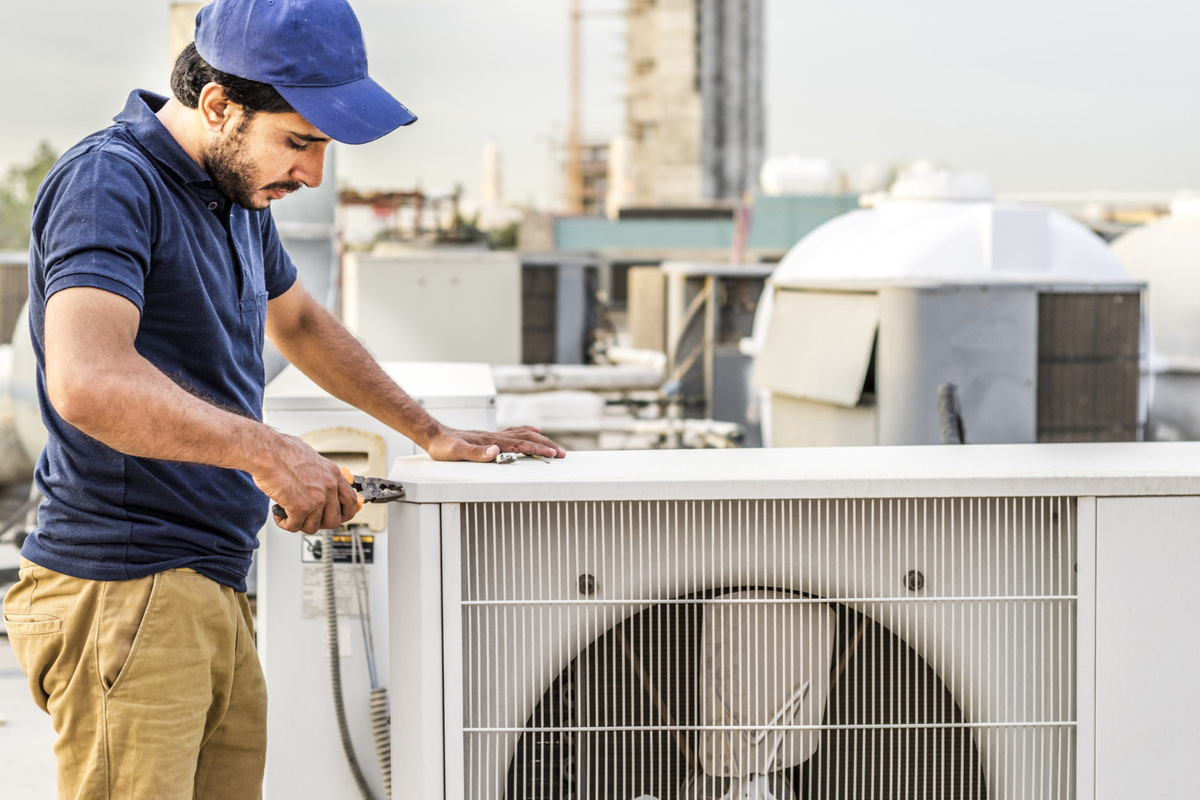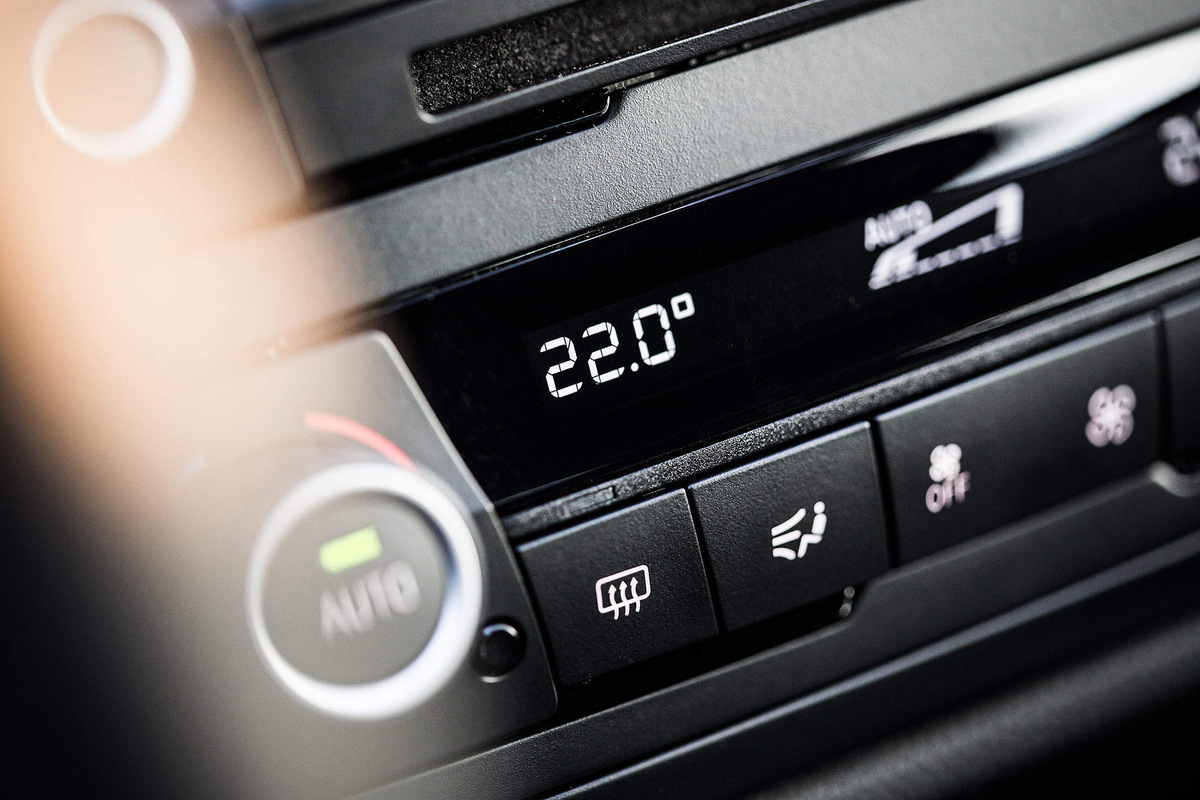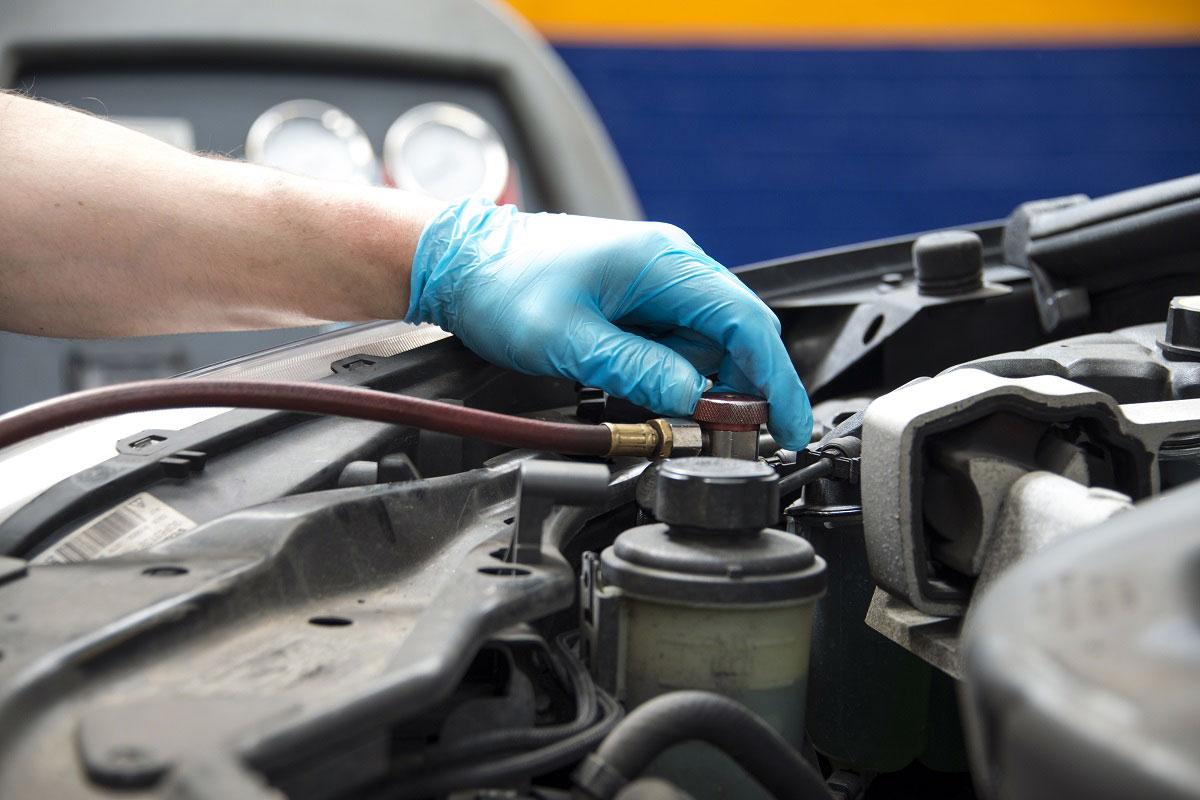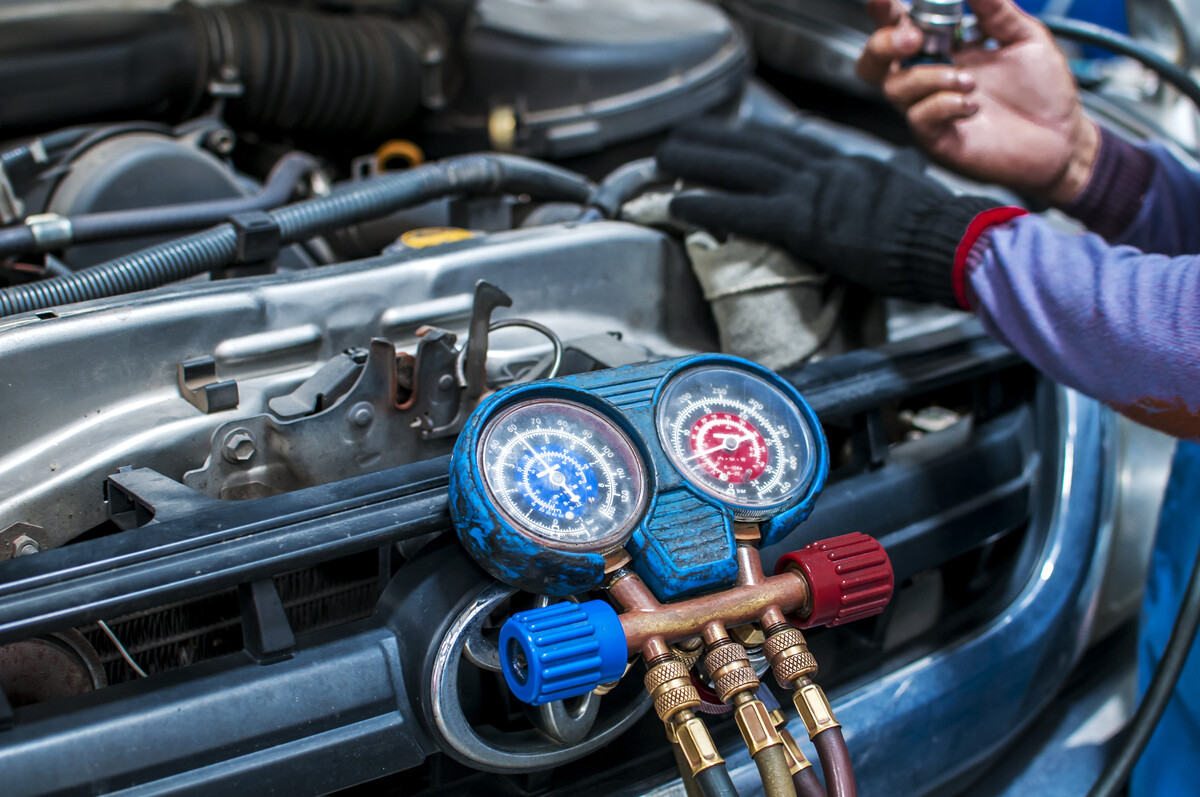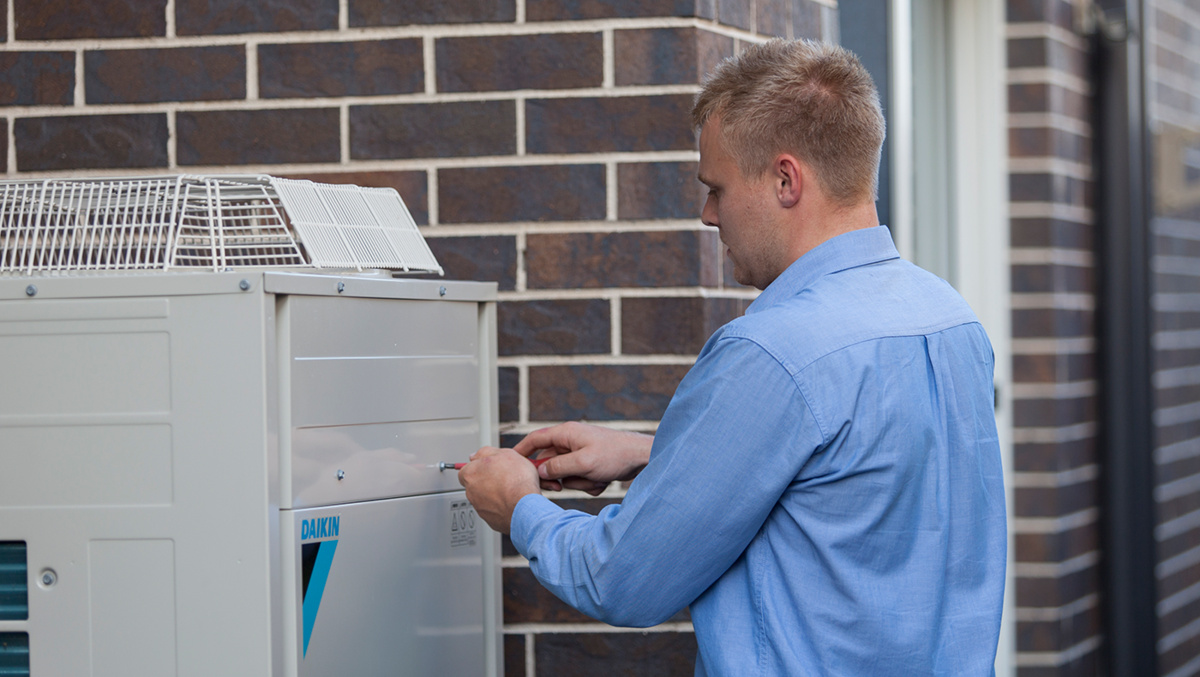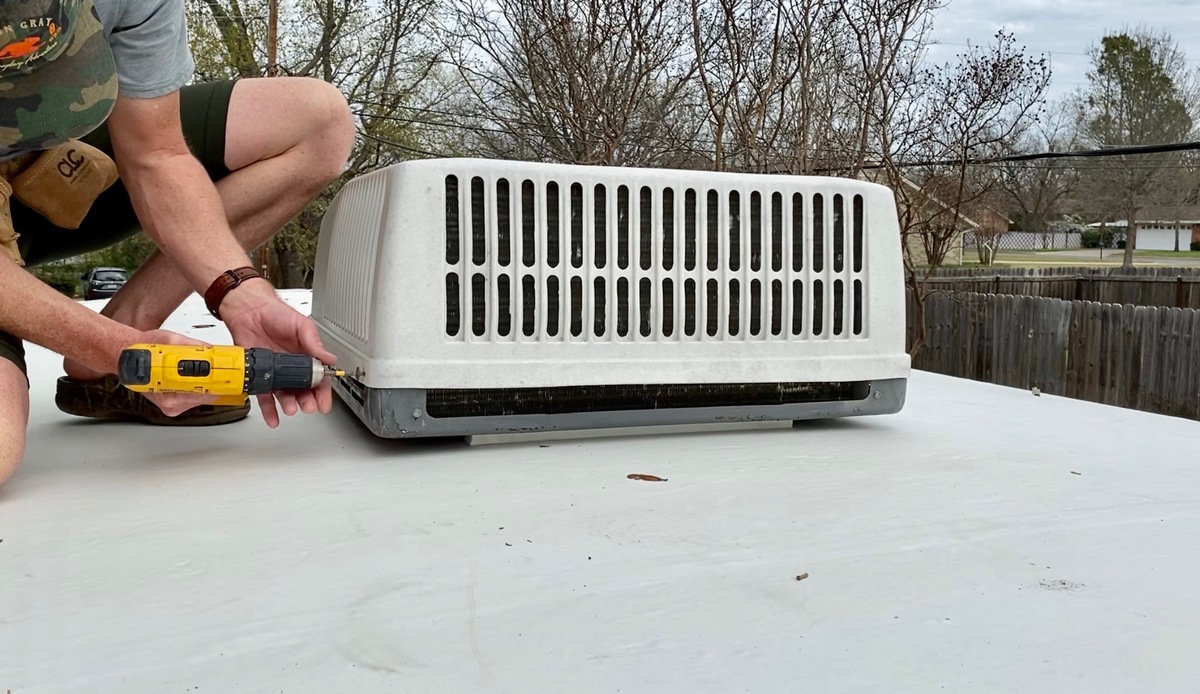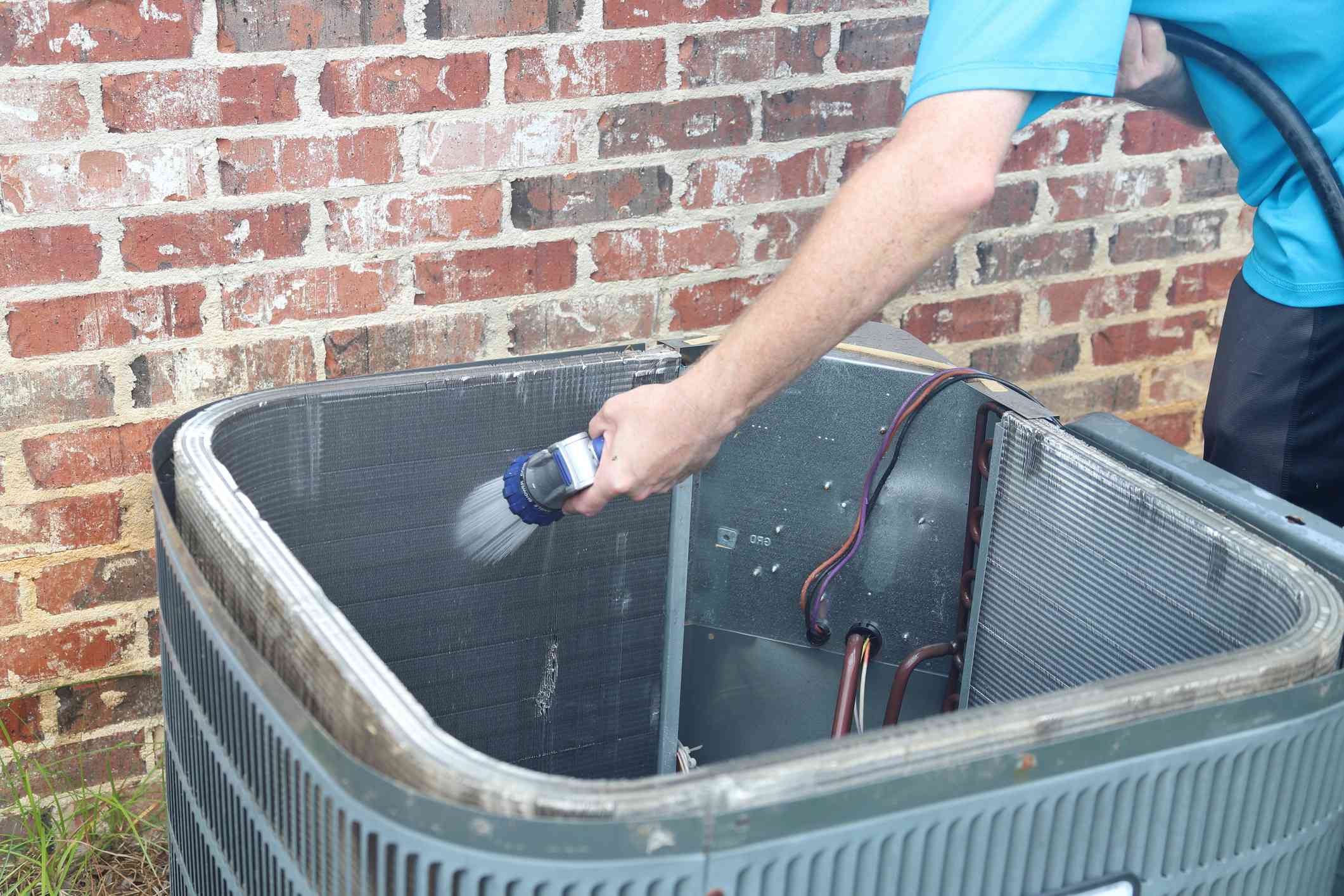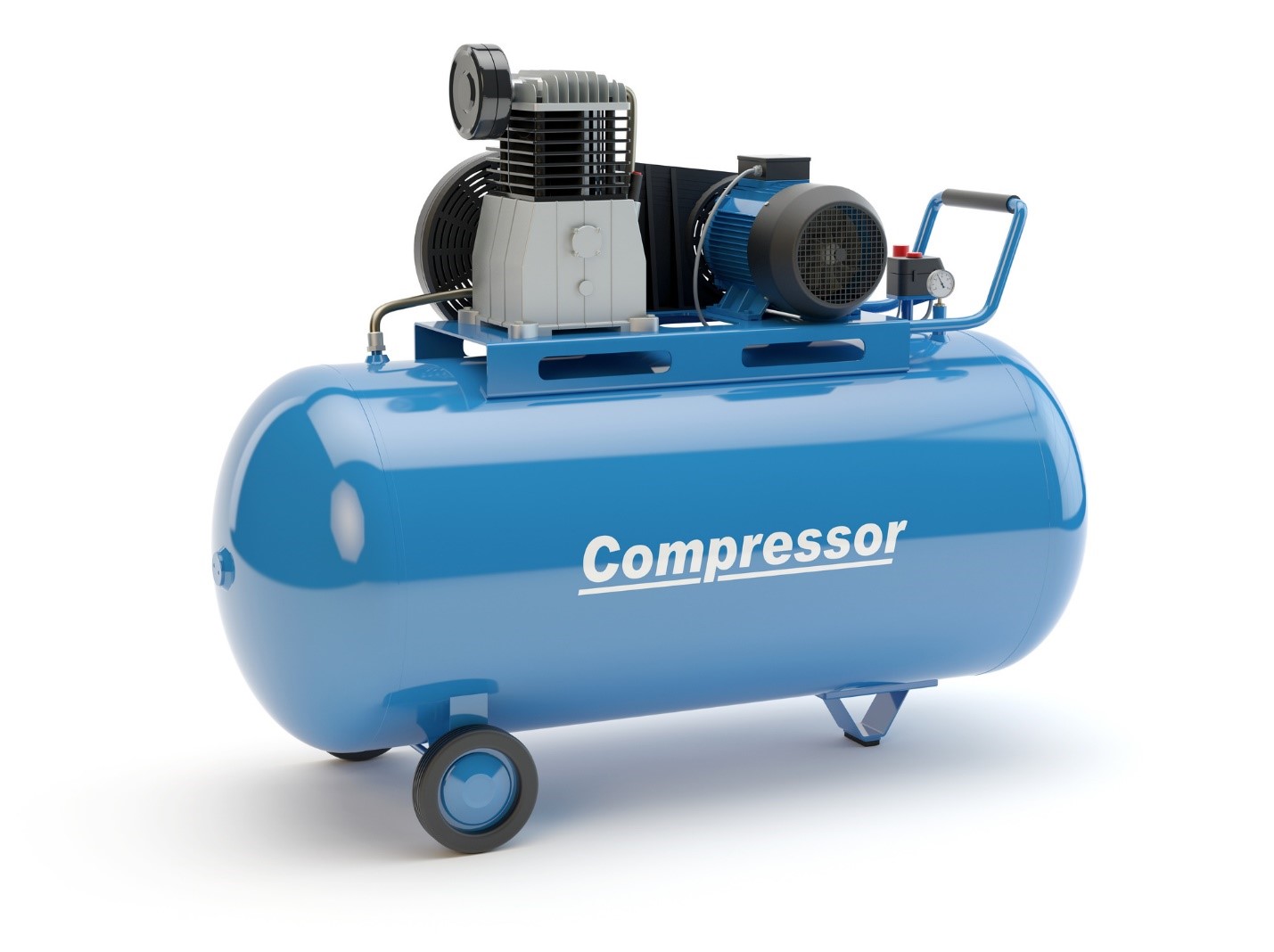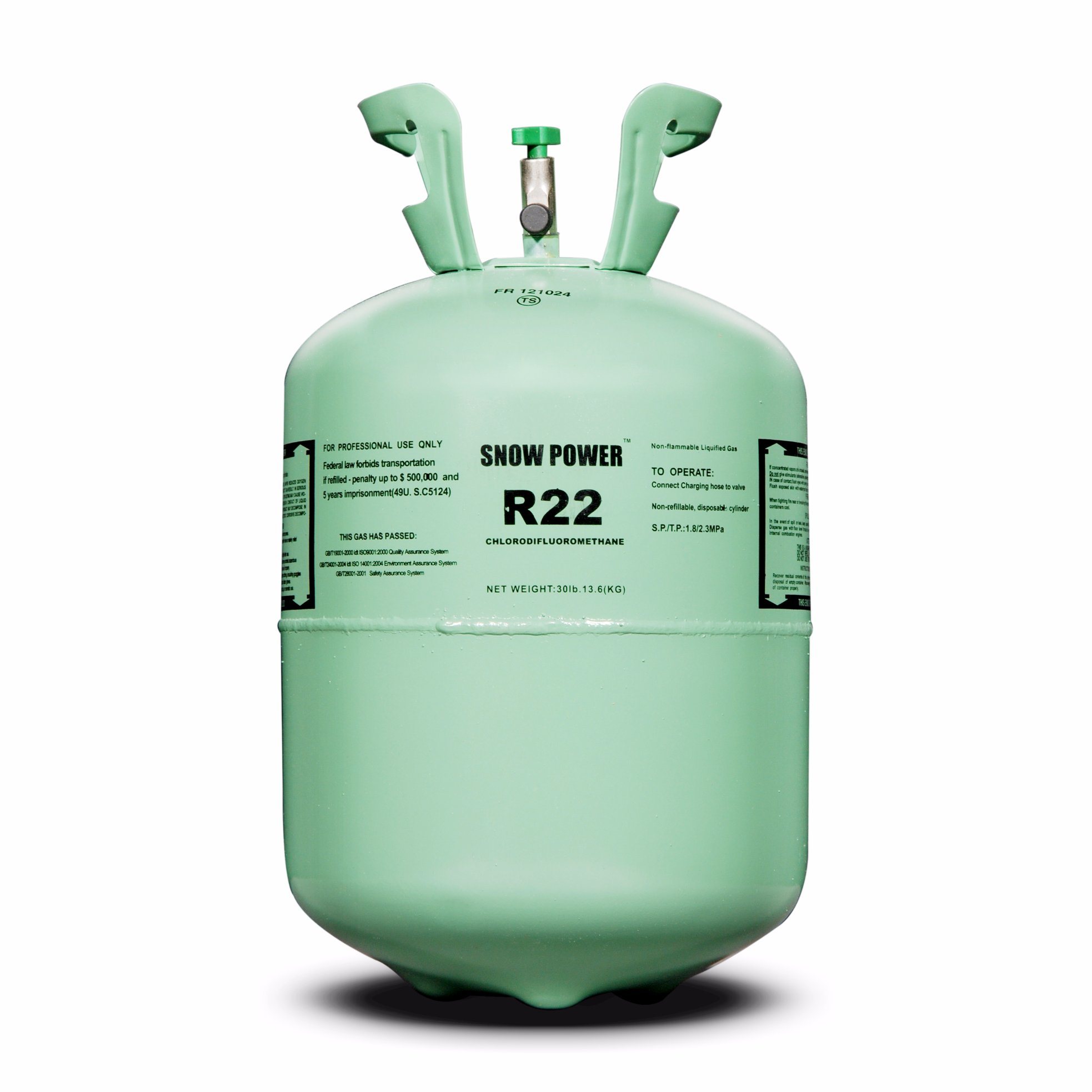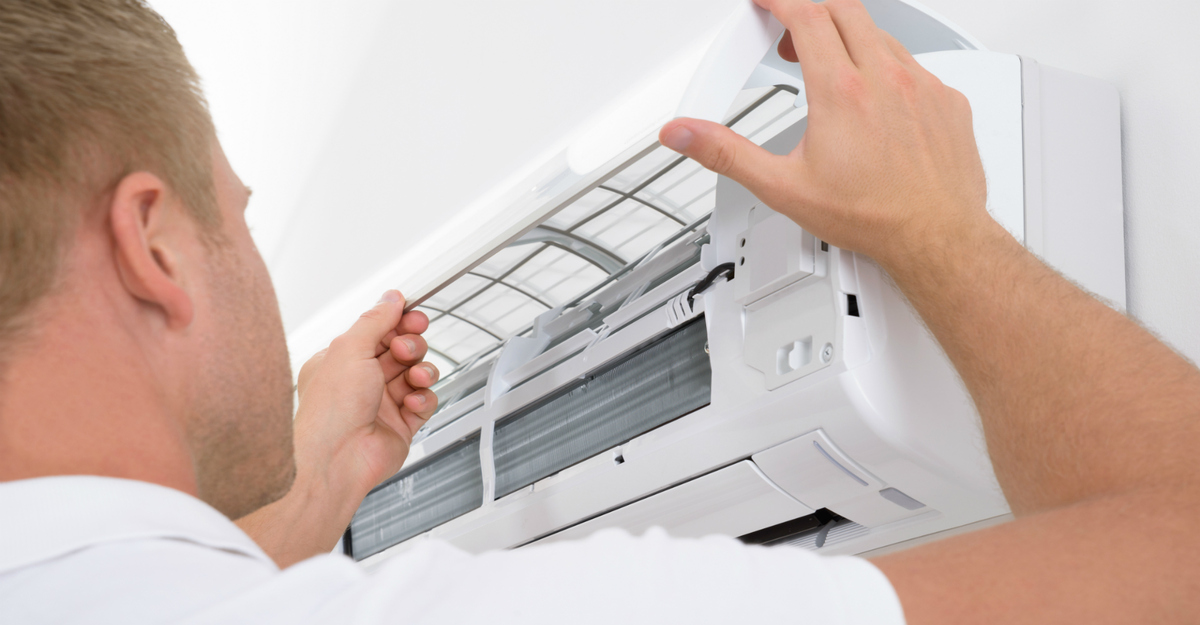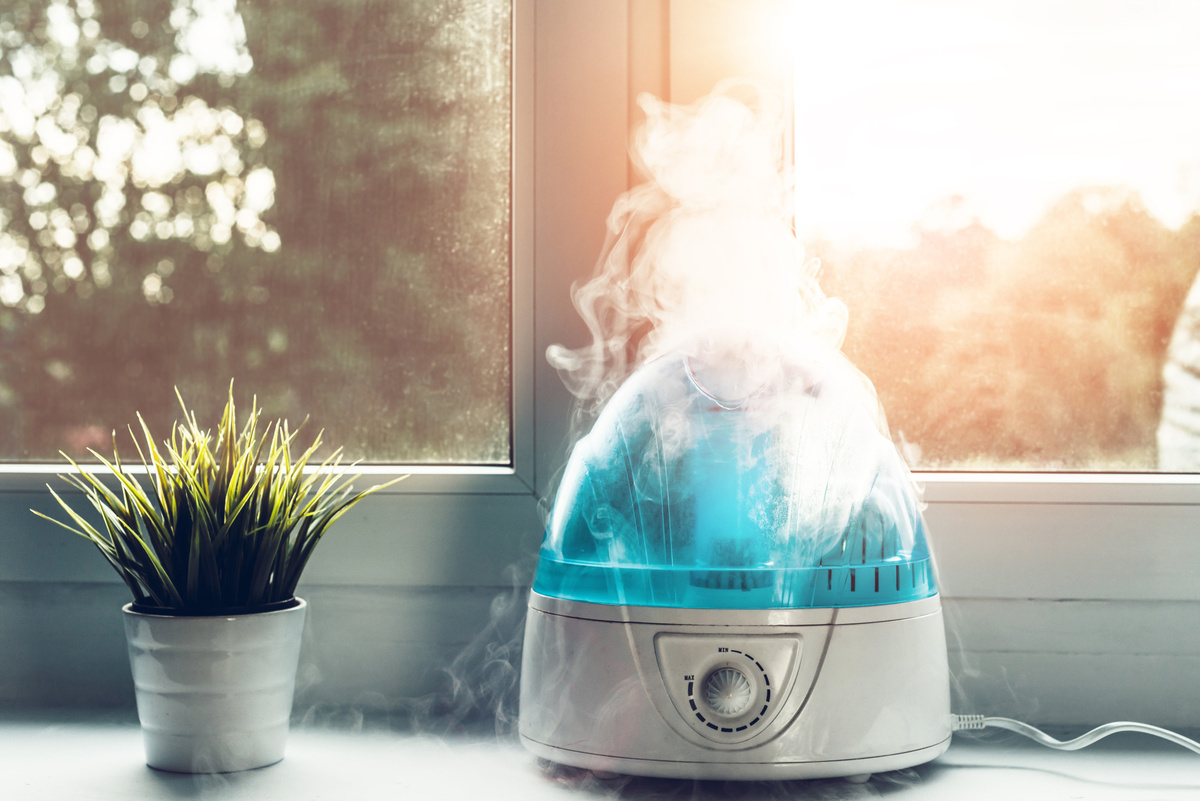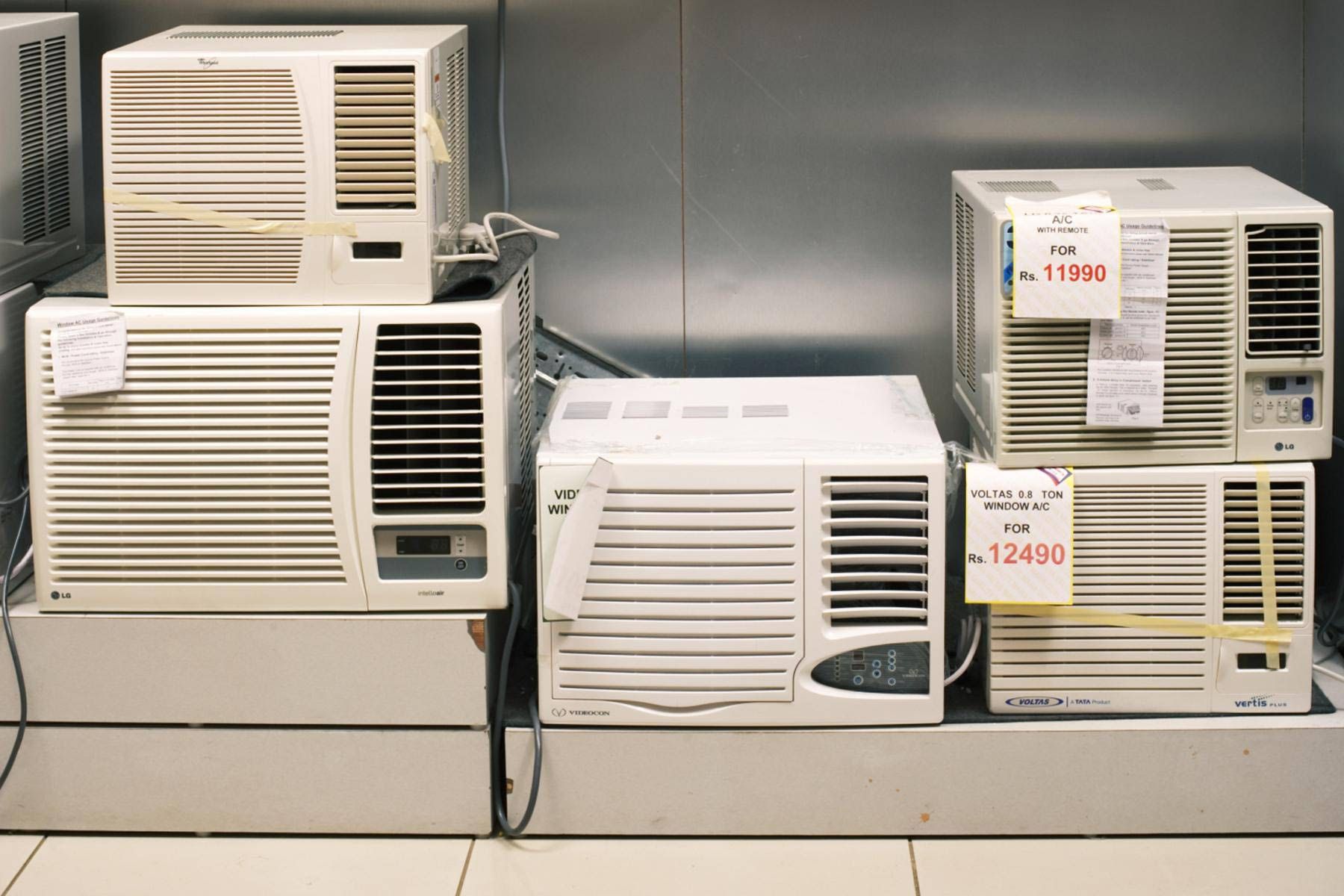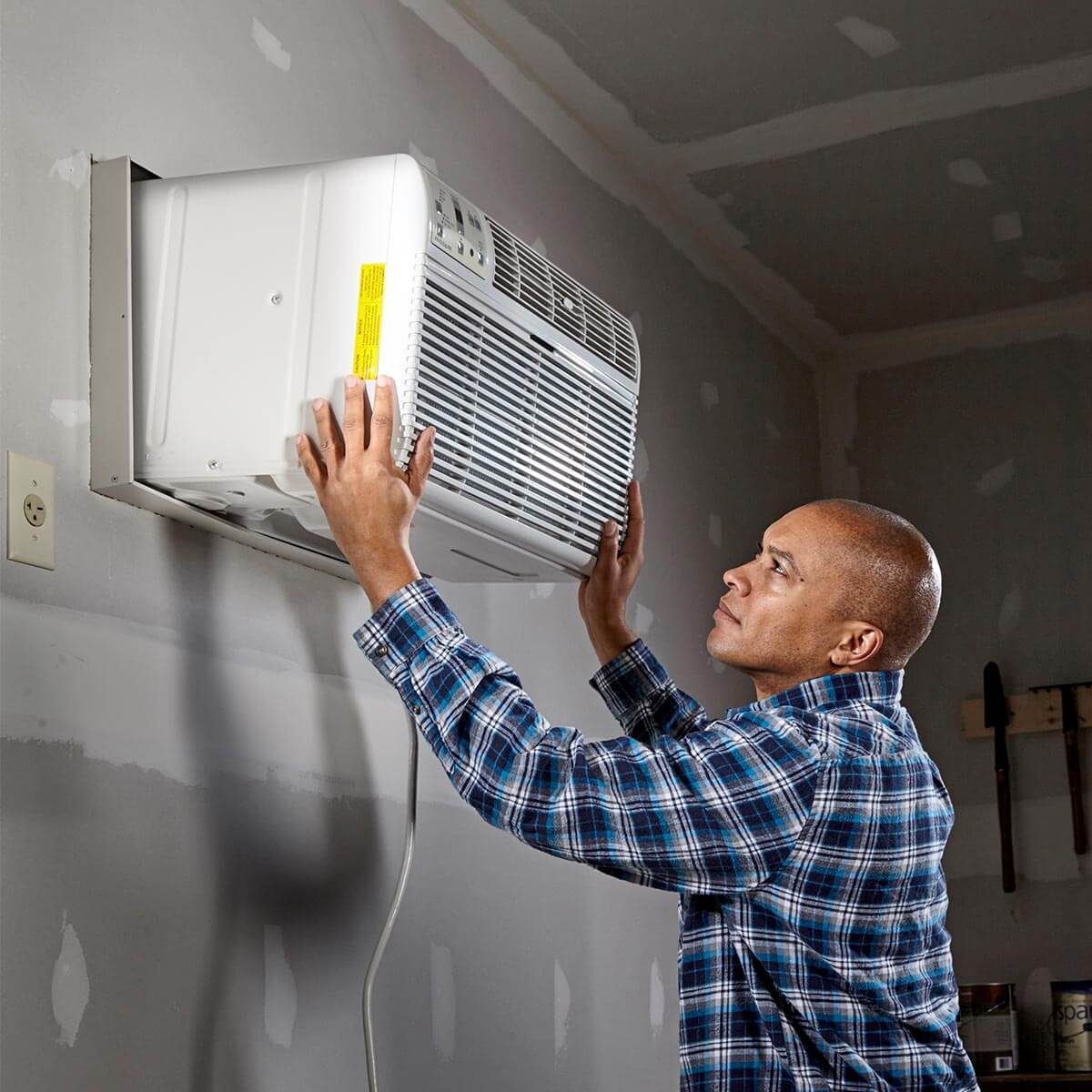Home>Home Maintenance>How To Depreciate Air Conditioning Unit
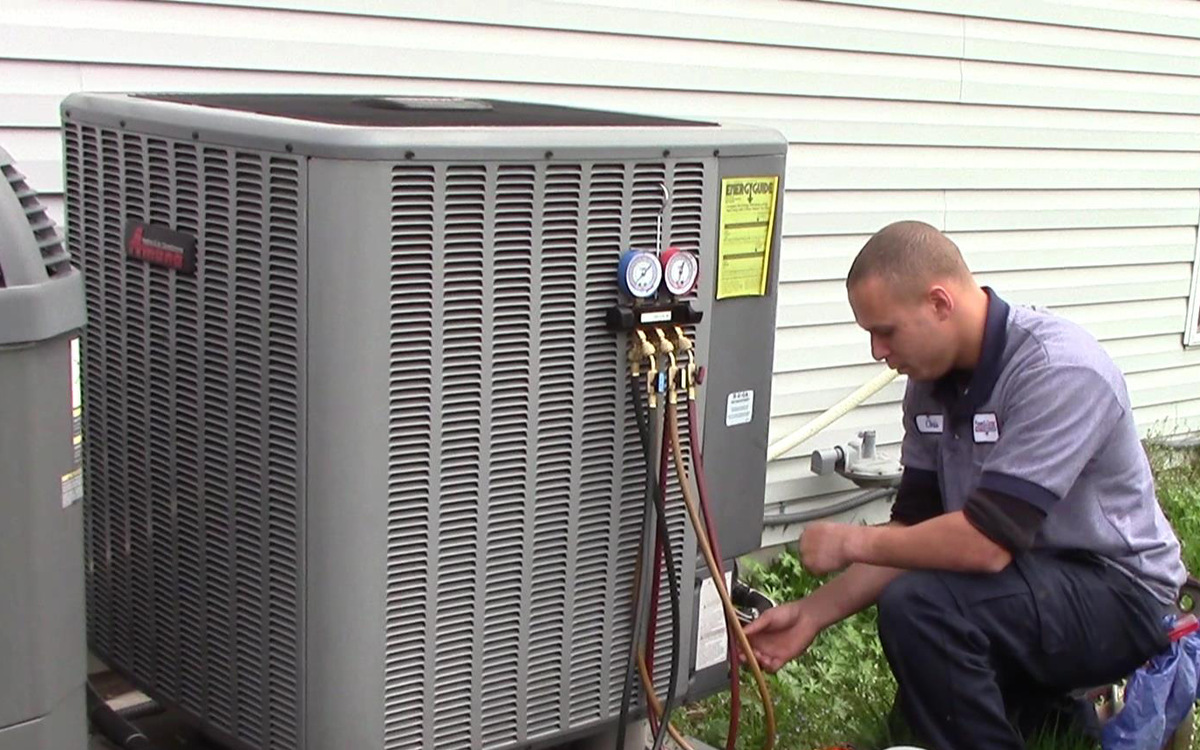

Home Maintenance
How To Depreciate Air Conditioning Unit
Modified: March 6, 2024
Learn how to properly depreciate your air conditioning unit as part of your home maintenance. Discover tips and strategies to ensure your AC remains efficient and functional for years to come.
(Many of the links in this article redirect to a specific reviewed product. Your purchase of these products through affiliate links helps to generate commission for Storables.com, at no extra cost. Learn more)
Introduction
Welcome to the world of home maintenance, where keeping your living space comfortable and inviting is a top priority. One essential component of a comfortable home is a reliable air conditioning unit. Whether you live in a hot and humid climate or just need a way to cool your home during the summer months, an air conditioning unit plays a crucial role in creating a comfortable living environment.
However, like all appliances, air conditioning units can depreciate over time. Depreciation is the gradual decrease in value of an asset due to wear and tear, obsolescence, or other factors. Understanding the depreciation of your air conditioning unit is important for budgeting purposes and determining when it may be time to replace or repair your unit.
In this article, we will delve into the world of air conditioning unit depreciation, exploring the factors that affect its value, determining the initial cost of the unit, calculating depreciation expenses, choosing the appropriate depreciation method, and recording depreciation in financial statements.
By the end of this article, you will have a comprehensive understanding of how to evaluate the depreciation of your air conditioning unit and make informed decisions about its maintenance or replacement.
Key Takeaways:
- Understanding the depreciation of your air conditioning unit helps estimate its decline in value over time. Factors like age, maintenance, and usage affect depreciation, influencing decisions on maintenance or replacement.
- Calculating and recording depreciation accurately in financial statements is crucial for reflecting the true value of your air conditioning unit. It helps make informed decisions for its maintenance and longevity.
Read more: What Is Air Conditioning
Depreciation Overview
Depreciation refers to the gradual decline in the value of an asset over time. It is a common concept in accounting and finance that reflects the wear and tear, obsolescence, or other factors that reduce the value and usefulness of an asset.
Depreciation is an important consideration for any homeowner or property owner who owns assets such as air conditioning units. By accounting for depreciation, you can estimate the decrease in value of your air conditioning unit over its useful life and plan for its eventual replacement or repairs.
There are several methods for calculating depreciation, each with its own advantages and considerations. The most common methods include the straight-line method, units-of-production method, and sum-of-the-years’-digits method. These methods spread the depreciation expense over the useful life of the asset, providing a more accurate representation of its value over time.
In the case of an air conditioning unit, depreciation can occur due to factors such as normal wear and tear, technological advancements making newer models more efficient, or changes in environmental regulations leading to the need for upgrades or replacements. Understanding the depreciation of your air conditioning unit can help you make informed decisions about its maintenance, repairs, or eventual replacement.
Now that we have a general understanding of depreciation, let’s explore how it applies specifically to air conditioning units and the factors that can affect their depreciation.
Understanding Air Conditioning Units
Before we dive into the depreciation of air conditioning units, it’s important to have a solid understanding of how these units work and their components.
An air conditioning unit is a system that controls the temperature, humidity, and overall air quality in a specific area or building. It works by removing heat from the air and replacing it with cool air, providing a comfortable indoor environment, especially during hot summer months.
There are two main types of air conditioning units: central air conditioning and room air conditioning. Central air conditioning systems are designed to cool an entire building or a large portion of it through a system of ducts and vents. Room air conditioning units, on the other hand, are smaller and typically only cool a single room or specific area.
Regardless of the type of air conditioning unit, they typically consist of several key components, including:
- Compressor: This component is responsible for compressing the refrigerant gas and increasing its temperature and pressure.
- Condenser: The condenser acts as a heat exchanger and helps dissipate the heat that is removed from the indoor air.
- Evaporator: The evaporator absorbs heat from the indoor air, allowing the refrigerant to evaporate and cool the air.
- Expansion valve: The expansion valve regulates the flow of refrigerant into the evaporator, controlling the cooling process.
In addition to these components, air conditioning units also include fans, filters, thermostats, and other elements that contribute to their functionality and efficiency.
Understanding these components and how they work together is important when evaluating the depreciation of an air conditioning unit. Factors such as wear and tear on the compressor, condenser, or other components can impact the efficiency and overall value of the unit over time.
Now that we have a better understanding of air conditioning units and their components, let’s explore the factors that can affect their depreciation.
Factors Affecting Air Conditioning Unit Depreciation
Several factors can impact the depreciation of an air conditioning unit. It’s important to consider these factors when estimating the decline in value and planning for maintenance or replacement. Let’s explore some of the key factors affecting air conditioning unit depreciation.
- Age: As with any piece of equipment, the age of an air conditioning unit can significantly affect its depreciation. Older units may experience more wear and tear, making them less efficient and decreasing their value over time.
- Maintenance and Care: Regular maintenance and proper care can extend the lifespan of an air conditioning unit and reduce its depreciation. Units that are well-maintained and serviced regularly will generally retain their value better than those that are neglected.
- Technological Advancements: As technology advances, newer models of air conditioning units are introduced with improved energy efficiency and features. The introduction of these newer models can lead to the depreciation of older units as they may become less desirable or outdated in terms of technology.
- Environmental Factors: The environmental conditions in which an air conditioning unit operates can also impact its depreciation. Units exposed to harsh weather conditions, high humidity levels, or other environmental factors may experience accelerated wear and tear, leading to faster depreciation.
- Usage: The frequency and duration of usage can affect the depreciation of an air conditioning unit. Units that are used more frequently, such as in commercial settings, may experience faster depreciation compared to units used less frequently in residential settings.
- Efficiency: The energy efficiency of an air conditioning unit can also impact its depreciation. With increasing concerns about energy conservation, older units that are less energy-efficient may depreciate more quickly as consumers prefer more efficient models.
It’s important to note that the actual impact of these factors on air conditioning unit depreciation can vary depending on the specific circumstances and maintenance practices. By considering these factors, homeowners can make informed decisions about maintaining, repairing, or replacing their air conditioning units based on their estimated depreciation.
Now that we understand the factors that can affect air conditioning unit depreciation, let’s move on to determining the initial cost of the unit.
Determining Initial Cost of the Air Conditioning Unit
Before we can accurately calculate the depreciation of an air conditioning unit, we need to determine its initial cost. The initial cost includes the purchase price of the unit as well as any installation costs or additional expenses associated with its setup.
When determining the initial cost of an air conditioning unit, consider the following factors:
- Purchase Price: The purchase price is the amount you paid to acquire the air conditioning unit. This includes the cost of the unit itself, any taxes, and any shipping or delivery fees.
- Installation Costs: In addition to the purchase price, you may have incurred installation costs if you hired a professional to install the unit. This could include labor costs, materials, and any necessary modifications to your home’s electrical or HVAC system.
- Additional Expenses: Depending on your specific circumstances, there may be additional expenses associated with the installation of your air conditioning unit. This could include permits, inspections, or any necessary upgrades to meet building codes or regulations.
To determine the initial cost, simply add up the purchase price, installation costs, and any additional expenses incurred during the setup of the air conditioning unit. This total amount will serve as the starting point for calculating the depreciation of the unit over its useful life.
Keep in mind that the initial cost may vary depending on factors such as the type and size of the unit, the complexity of the installation, and any additional features or customized options you choose. It’s essential to keep accurate records of these costs for accounting purposes and to assist in accurately calculating the depreciation of the unit.
Now that we have determined the initial cost of the air conditioning unit, let’s explore how to calculate its depreciation expense using different methods.
Read more: How Is Air Conditioning Powered
Calculating Depreciation Expense
Calculating the depreciation expense of an air conditioning unit involves spreading the initial cost of the unit over its useful life. This process allows you to allocate a portion of the cost as an expense for each accounting period, reflecting the gradual decline in value over time.
There are several methods commonly used to calculate depreciation: the straight-line method, units-of-production method, and sum-of-the-years’-digits method. Let’s explore each method in more detail:
- Straight-Line Method: The straight-line method is the simplest and most common method of calculating depreciation. In this method, the depreciation expense is evenly spread over the useful life of the air conditioning unit. The formula for straight-line depreciation is:
Depreciation Expense = (Initial Cost – Salvage Value) / Useful Life
Where the salvage value is the estimated value of the unit at the end of its useful life and the useful life is the expected duration of the unit’s functional use.
- Units-of-Production Method: The units-of-production method calculates depreciation based on the actual usage of the air conditioning unit. The depreciation expense is determined by dividing the cost of the unit by the estimated number of units (hours, miles, etc.) it will produce over its useful life. This method is particularly useful for units that are used extensively in production or operation.
- Sum-of-the-Years’-Digits Method: The sum-of-the-years’-digits method is another accelerated depreciation method. It assigns higher depreciation expenses in the earlier years of the unit’s useful life and gradually reduces the expense over time. The formula for sum-of-the-years’-digits depreciation is:
Depreciation Expense = (Remaining Useful Life / Sum of the Years) * (Initial Cost – Salvage Value)
The sum of the years is calculated by adding up the digits of the useful life (e.g., for a 5-year useful life, the sum of the years would be 5+4+3+2+1=15).
It’s important to choose the appropriate depreciation method based on factors such as the nature of usage, estimated usage, and industry standards. Consulting with a qualified accountant or financial professional can help determine the most suitable method for your specific circumstances.
By utilizing these methods, you can accurately calculate the depreciation expense of your air conditioning unit and inform your financial statements accordingly.
Now that we have covered the process of calculating depreciation, let’s discuss how to choose the appropriate depreciation method.
To depreciate an air conditioning unit, you can use the straight-line method, which spreads the cost evenly over its useful life. Divide the cost of the unit by the number of years it will be used to calculate the annual depreciation expense.
Straight-Line Method
One of the most commonly used methods for calculating depreciation is the straight-line method. This method offers a straightforward and systematic approach to distributing the depreciation expense evenly over the useful life of an air conditioning unit.
Here’s how you can calculate depreciation using the straight-line method:
- Determine the Initial Cost: Start by determining the initial cost of the air conditioning unit. This includes the purchase price, installation costs, and any additional expenses incurred during setup.
- Estimate the Salvage Value: The salvage value is the estimated value of the unit at the end of its useful life. It represents the value that the unit is expected to retain. Consider factors such as the condition of the unit and its potential resale value when estimating the salvage value.
- Determine the Useful Life: The useful life represents the expected duration of the air conditioning unit’s functional use. Consider factors such as technological advancements, maintenance practices, and industry standards when determining the useful life.
- Calculate the Depreciation Expense: Subtract the estimated salvage value from the initial cost, then divide the resulting amount by the useful life of the unit. The formula for calculating depreciation using the straight-line method is:
Depreciation Expense = (Initial Cost – Salvage Value) / Useful Life
This calculation will give you the amount of depreciation expense to allocate for each accounting period.
- Record Depreciation Expense: Finally, record the depreciation expense in your financial statements. Debit the depreciation expense account and credit the accumulated depreciation account. Accumulated depreciation is a contra-asset account that offsets the initial cost of the air conditioning unit, reflecting the total depreciation incurred over time.
The straight-line method provides a systematic and consistent approach to calculating depreciation, making it easier to forecast and plan for the replacement or maintenance costs of an air conditioning unit. By spreading the depreciation expense evenly over the useful life, this method provides a clearer representation of the decline in value over time.
It’s important to note that the straight-line method assumes a steady and consistent depreciation rate throughout the useful life of the air conditioning unit. While this may not reflect the actual depreciation pattern in some cases, it offers a simple and practical approach for many homeowners and businesses.
Now that you understand how to calculate depreciation using the straight-line method, let’s explore the units-of-production and sum-of-the-years’-digits methods for depreciation calculation.
Units-of-Production Method
The units-of-production method is an alternative approach to calculating depreciation that takes into account the actual usage or production output of an air conditioning unit. This method is particularly useful for units that are extensively used in production or operation, where the depreciation expense is directly tied to the number of units produced or hours of usage.
Here’s how you can calculate depreciation using the units-of-production method:
- Determine the Initial Cost: Start by determining the initial cost of the air conditioning unit, including the purchase price, installation costs, and any additional expenses incurred during setup.
- Estimate the Salvage Value: Just like in the straight-line method, estimate the salvage value, which represents the estimated value of the unit at the end of its useful life.
- Estimate the Units of Production: Determine the estimated number of units (hours, miles, etc.) that the air conditioning unit will produce or operate during its useful life. This could be based on historical data, industry standards, or projected usage.
- Calculate the Depreciation Expense per Unit: Subtract the estimated salvage value from the initial cost, then divide the resulting amount by the estimated units of production. The formula for calculating depreciation using the units-of-production method is:
Depreciation Expense per Unit = (Initial Cost – Salvage Value) / Units of Production
This gives you the depreciation expense allocated to each unit produced or hour of usage.
- Calculate the Depreciation Expense: Multiply the depreciation expense per unit by the actual number of units produced or the hours of usage during each accounting period. This will give you the depreciation expense for that specific period.
- Record Depreciation Expense: Record the depreciation expense in your financial statements following the appropriate debits and credits. As with the straight-line method, debit the depreciation expense account and credit the accumulated depreciation account to reflect the total depreciation incurred over time.
The units-of-production method allows for a more precise and accurate allocation of depreciation based on the actual usage or production output of the air conditioning unit. By tying the depreciation expense to the unit’s operational activity, this method provides a more realistic representation of the decline in value over time.
It’s important to note that the units-of-production method requires careful tracking and documentation of the actual number of units produced or hours of usage. Accurate record-keeping is essential to ensure the depreciation expense is allocated correctly and reflects the actual usage of the air conditioning unit.
Now that you understand how to calculate depreciation using the units-of-production method, let’s explore the sum-of-the-years’-digits method.
Sum-of-the-Years’-Digits Method
The sum-of-the-years’-digits method is an accelerated depreciation method that assigns higher depreciation expenses in the earlier years of an air conditioning unit’s useful life. This method recognizes that the value of an asset typically declines more rapidly in the early years compared to later years.
Here’s how you can calculate depreciation using the sum-of-the-years’-digits method:
- Determine the Initial Cost: Begin by determining the initial cost of the air conditioning unit, including the purchase price, installation costs, and any additional expenses associated with setup.
- Estimate the Salvage Value: Estimate the salvage value, which represents the estimated value of the unit at the end of its useful life.
- Determine the Useful Life: Determine the useful life of the air conditioning unit. This represents the expected duration of its functional use, taking into account factors such as technological advancements and industry standards.
- Calculate the Sum of the Years: Calculate the sum of the years by adding up the digits of the useful life. For example, if the useful life is 5 years, the sum of the years would be 5 + 4 + 3 + 2 + 1 = 15.
- Determine the Depreciation Expense: For each accounting period, determine the remaining useful life of the air conditioning unit. Divide the remaining useful life by the sum of the years, and then multiply that ratio by the difference between the initial cost and the estimated salvage value. The formula for calculating depreciation using the sum-of-the-years’-digits method is:
Depreciation Expense = (Remaining Useful Life / Sum of the Years) * (Initial Cost – Salvage Value)
This calculation will give you the depreciation expense to be allocated for each period remaining in the useful life of the unit.
- Record Depreciation Expense: Record the depreciation expense in your financial statements using the appropriate debits and credits. Debit the depreciation expense account and credit the accumulated depreciation account to reflect the total depreciation incurred over time.
The sum-of-the-years’-digits method provides a more accelerated depreciation expense in the earlier years, which aligns with the common pattern of higher depreciation rates during that period. This method allows for a more accurate representation of the decline in value over time and can be useful when estimating the replacement or repair costs of an air conditioning unit.
Keep in mind that the sum-of-the-years’-digits method assumes a decreasing depreciation rate over time, meaning the depreciation expense will gradually decrease as the useful life of the unit progresses. This reflects the general trend of assets losing value more rapidly in the early years and at a slower pace in later years.
Now that you understand how to calculate depreciation using the sum-of-the-years’-digits method, you have three different approaches to choose from when estimating the depreciation expense of your air conditioning unit.
In the next section, we will discuss how to choose the appropriate depreciation method for your specific circumstances.
Read more: How To Air Condition A Shed
Choosing the Appropriate Depreciation Method
When it comes to choosing the appropriate depreciation method for your air conditioning unit, there are several factors to consider. The decision will depend on various factors such as industry standards, specific circumstances, and the nature of usage or production. Here’s what to consider when selecting a depreciation method:
- Nature of Usage: Consider how the air conditioning unit is being used. Is it a central air conditioning system used to cool an entire building, or a room air conditioning unit used for a specific area? The nature of usage may influence the choice of depreciation method, as certain methods are more suitable for units that are heavily used in production or operation.
- Estimated Usage: Estimate the number of units produced or hours of usage over the course of the air conditioning unit’s useful life. If you have a good estimate of the usage, the units-of-production method may be appropriate as it directly ties the depreciation expense to the actual usage.
- Industry Standards: Consider the depreciation methods commonly used in your industry. Some industries may have specific guidelines or standards for depreciation calculation. It can be beneficial to follow industry practices for consistency and comparability.
- Accuracy vs. Simplicity: Evaluate the trade-off between accuracy and simplicity. The straight-line method is the most straightforward and widely used method, providing easy calculation and consistent depreciation expense. However, other methods such as the units-of-production or sum-of-the-years’-digits methods may provide a more accurate representation of depreciation based on the specific circumstances of your air conditioning unit.
- Expected Resale Value: Estimate the expected resale value of the air conditioning unit at the end of its useful life. If the salvage value is significant, it may influence the choice of depreciation method. The units-of-production method or sum-of-the-years’-digits method may be more appropriate in cases where the unit’s value is expected to decline rapidly in the early years.
Ultimately, the choice of depreciation method depends on your specific circumstances and needs. It’s important to carefully evaluate these factors and consult with a qualified accountant or financial professional if needed.
Remember, the goal of selecting the appropriate depreciation method is to accurately reflect the decline in value of the air conditioning unit over its useful life. By choosing the most suitable method, you can make informed decisions regarding maintenance, repairs, or replacement based on the estimated depreciation expense.
Now that we have covered the factors to consider when choosing a depreciation method, let’s move on to discussing the recording of depreciation in financial statements.
Recording Depreciation in Financial Statements
Recording depreciation in your financial statements is an important process that reflects the decline in value of your air conditioning unit over time. It provides an accurate representation of the reduction in the asset’s worth and ensures the financial statements reflect the true value of your business or personal assets. Here’s how to record depreciation in your financial statements:
- Depreciation Expense: Start by calculating the depreciation expense for each accounting period using the chosen depreciation method, such as the straight-line method, units-of-production method, or sum-of-the-years’-digits method. This expense represents the portion of the air conditioning unit’s value that is being used up during that period.
- Debit and Credit Entries: Create a journal entry to record the depreciation expense. Debit the depreciation expense account and credit the accumulated depreciation account. The depreciation expense account reflects the amount of depreciation incurred during the period, while the accumulated depreciation account offsets the initial cost of the air conditioning unit.
- Income Statement and Balance Sheet: Include the depreciation expense in your income statement as an operating expense. This reduces your reported net income for the period, reflecting the decrease in value of the air conditioning unit. Additionally, include the accumulated depreciation as a contra-asset on your balance sheet. This reduces the reported value of the air conditioning unit, reflecting the total depreciation incurred over time.
- Footnotes and Disclosures: Depending on the accounting standards and regulations that apply to your financial statements, you may also need to provide footnotes or additional disclosures regarding your depreciation policies and methods. These disclosures provide transparency and clarity to the readers of your financial statements.
Accurate and consistent recording of depreciation ensures the financial statements present a true and fair view of your assets’ value. It also helps in making informed decisions regarding maintenance, repairs, or replacement of the air conditioning unit based on its estimated depreciation over time.
It’s important to note that the recording of depreciation should be done in compliance with accounting standards and regulations applicable to your jurisdiction. Consulting with a qualified accountant or financial professional will ensure proper adherence to these requirements.
Now that you understand how to record depreciation in financial statements, let’s summarize the key points covered in this article.
Conclusion
Understanding the depreciation of your air conditioning unit is crucial for both homeowners and businesses. By evaluating the depreciation, you can estimate the decline in value over time and make informed decisions regarding maintenance, repairs, or replacement. In this article, we covered the key aspects of air conditioning unit depreciation, including an overview of depreciation, understanding air conditioning units, factors affecting depreciation, determining the initial cost, calculating depreciation expense using different methods, choosing the appropriate method, and recording depreciation in financial statements.
The depreciation of an air conditioning unit is influenced by factors such as age, maintenance, technological advancements, environmental conditions, usage, and efficiency. Determining the initial cost involves considering the purchase price, installation costs, and additional expenses. The depreciation expense can be calculated using methods like the straight-line method, units-of-production method, or sum-of-the-years’-digits method, each with its own benefits and considerations. Choosing the appropriate depreciation method entails assessing the nature of usage, estimated usage, industry standards, accuracy versus simplicity, and expected resale value. Finally, recording depreciation in financial statements involves creating journal entries, debiting the depreciation expense account, crediting the accumulated depreciation account, and including the expense in the income statement and accumulated depreciation in the balance sheet.
By accurately accounting for depreciation, you can evaluate the true value of your air conditioning unit, reflect it in financial statements, and make informed decisions regarding maintenance, repairs, or replacement. Remember to consult with a qualified accountant or financial professional for guidance specific to your circumstances and compliance with accounting standards and regulations.
With a thorough understanding of air conditioning unit depreciation and the tools to calculate and record depreciation, you are well-equipped to navigate the world of home maintenance and make informed decisions for your living space’s comfort and longevity.
Frequently Asked Questions about How To Depreciate Air Conditioning Unit
Was this page helpful?
At Storables.com, we guarantee accurate and reliable information. Our content, validated by Expert Board Contributors, is crafted following stringent Editorial Policies. We're committed to providing you with well-researched, expert-backed insights for all your informational needs.
